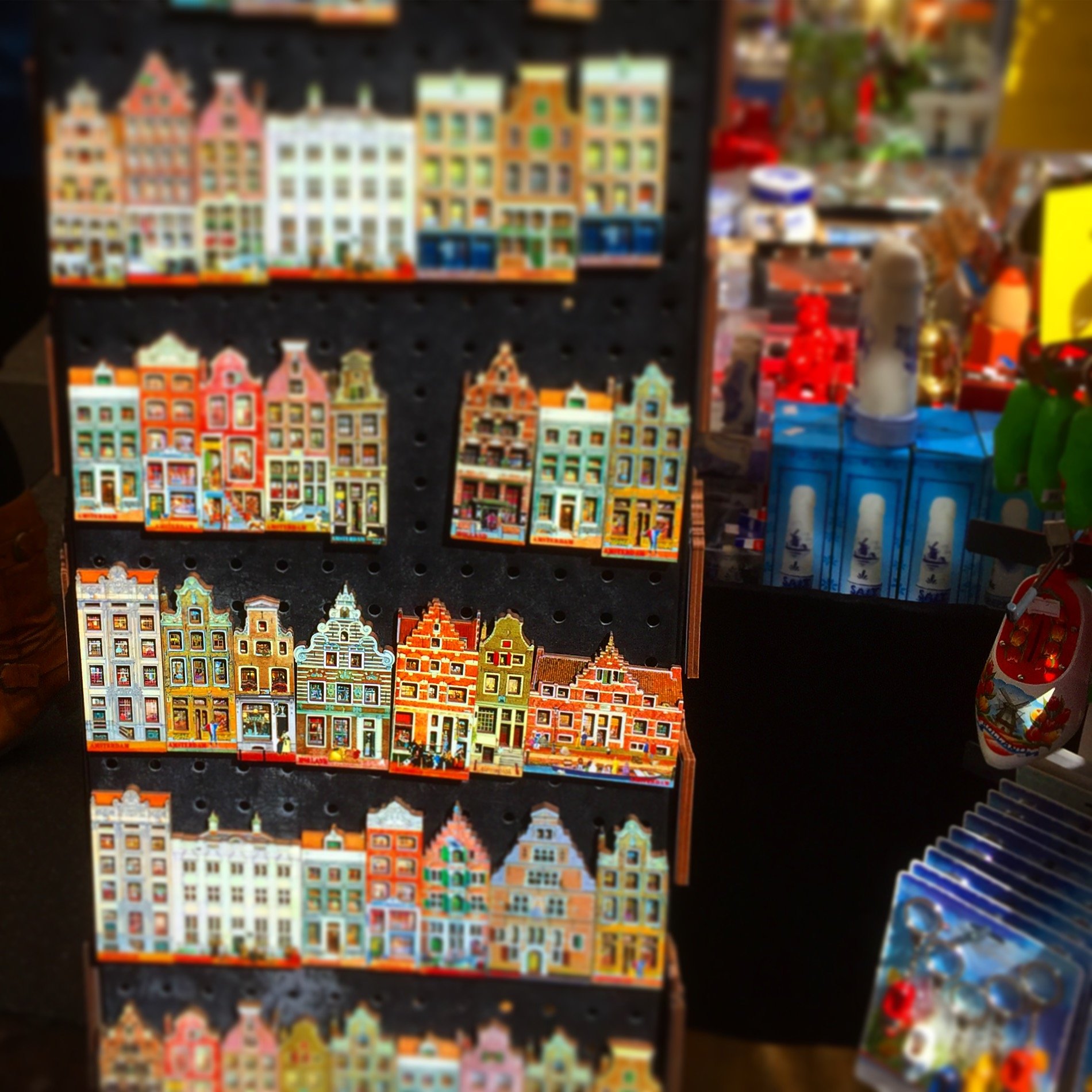Colorful Amsterdam
Roaming through Amsterdam on any given day is a feast for the eye, the soul and for the camera.
Amsterdam souvenirs
Amsterdam souvenirs, its magnetic (the town and the magnets)
Amsterdam’s canals and flowers, a priceless combination
Amsterdam and cheese, what else is natural?
Sweet Amsterdam and the van Gogh straw hat
Amsterdam
Amstellodamus - as the once small fishing village was called - was founded on October 27, 1275. Although the country's seat of government and royal residence is located in The Hague, 60 kilometers away, Amsterdam has been the capital of the Netherlands since 1983. In the Kingdom of the Netherlands, Amsterdam is the most populous city with approximately 2.4 million people (Greater Amsterdam).
With nearly seven million tourists annually, the city is one of the five most visited cities in Europe. Schiphol Airport offers more direct flights than any other airport in the world. Last year, Europe's number three airport handled 1.7 million tons of cargo and 71.1 million passengers. In addition to two universities with their own university hospitals, the city is home to many important companies and banks, and most recently the European Medicines Agency (EMA).
Amsterdam's landmark is its world-famous labyrinthine network of navigable waterways - the canals. It stretches an impressive 80 kilometers along 165 canals and passes under 1,281 bridges. Amsterdam is rightly known as the "Venice of the North"; the Italian maritime city, with a total canal length of about 40 kilometers and 398 bridges, is a distant second.
The length of the city's cycling network is also impressive: more than 400 kilometers in total offer the best conditions for fietsers (cyclists). There are more than 880,000 bicycles in the city, more than the number of inhabitants.
The port - the second largest in the Netherlands after Rotterdam - is of particular economic importance. It handles nearly 80 million tons of goods each year. Tourism is one of the city's most important sources of income: Canals, cafes, and renowned museums are a major draw for visitors.
Real estate has always played an important role in the city's history, especially for the city treasurer. In the past, taxes were calculated according to the width of the building's façade, so there are a number of houses here that are as narrow as they are cute, including the world's narrowest house, which is only one meter wide. Another peculiarity is the fact that Amsterdam was built on stilts: A typical house stands on an average of ten piles, the Central Station on 9,000 and the Royal Palace on more than 13,000.
When the weather is bad, Amsterdam offers a number of attractive "shelter" options: There are 75 museums, including the Rijksmuseum, the Van Gogh Museum and the Anne Frank House. A correspondingly large number of masterpieces can be admired in the exhibition halls: The city has 22 paintings by Rembrandt and more than 200 by van Gogh. Amsterdam also offers an impressive culinary variety, with over 1,150 restaurants and 1,515 pubs and bars.





